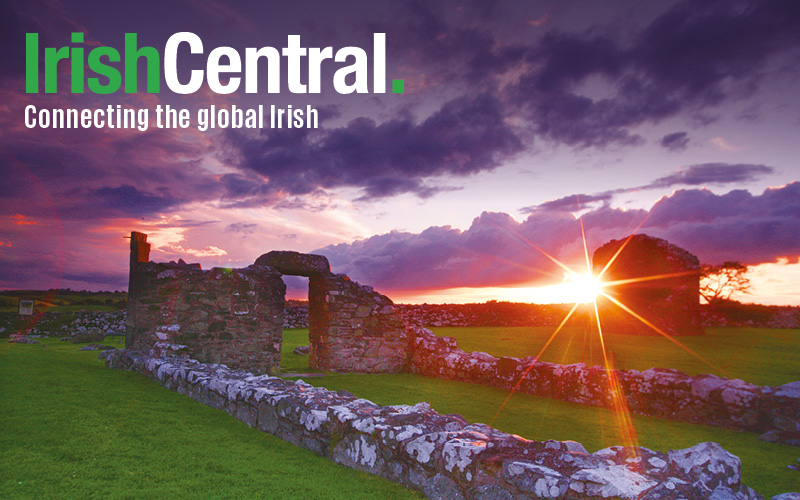As the Democrats met recently in Philadelphia for their convention it was ironic—to note that the building where many a Democratic hero was cheered and crowned was being converted into a dome-topped office-cum-retail building. The Tammany Hall tiger had at last been tamed.
It was from Tammany Hall for instance that Al Smith the first significant Catholic candidate for president sallied forth to do battle. It was from there that the Irish off the Famine boats gained a foothold in American politics and never let it go.
The $50-million renovation will totally remove its historic auditorium and take about two years to complete. Parts of the landmarked building will be preserved, like the medallion of Chief Tamanend, the guy the organization was named after.
The building is a true piece of Americana and it reminds us of just how far the Irish had to fight and crawl before they became a force in New York politics.
There are two landmarks in New York City that shout IRISH at you—St. Patrick’s Old Cathedral down on Mulberry Street and Tammany Hall, snug at the corner of East 17th Street and Park Avenue overlooking Union Square.
Old St. Patrick’s was dedicated in 1809 and, as the Irish flooded the city, became the headquarters for their biggest defender, “Dagger” John Hughes, the toupee-wearing archbishop who defended his people against the Know-Nothings and built the Catholic infrastructure of New York: its schools, hospitals and orphanages. He was also the man who started construction on the new St. Patrick’s Cathedral, out there in the country at 50th Street and Fifth Avenue.
If Dagger John—so called because he wore a crucifix which looked like a dagger—cared about the spiritual health of his people, Tammany took care of the corporal life of the immigrants of the 19th century. Tammany’s reign would run from the 18th to the mid-20th century. They would be mocked as corrupt and insidious, but they served their purpose—and were supported by the immigrants of the day, not only the Irish, but others too, including the Germans and Italians.
The old Tammany Hall was on East 14th Street on the opposite side of the street from where the Con Edison Building sits today. At the height of Tammany power, on July 4, 1929, it opened its new building on Union Square and paraded out its stars of the day—Governor Franklin Delano Roosevelt, former Governor Al Smith, and the dashing mayor of Jazz Age New York, James J. (Jimmy, Beau James) Walker, the political rogue from Greenwich Village.
Although the term “Tammany” today is synonymous in many people’s minds with “corruption,” the collection of political celebrities that day, most prominently FDR, would in four short years make their mark on the whole of the United States during the Great Depression. They would do this by transferring agencies operating in New York State and move them to Washington where they were given a new name—The New Deal.
There’s probably no one around who knows more about the ins-and-outs of Tammany than Terry Golway, senior editor at POLITICO New York. Golway is the biographer of both the American Fenian John Devoy and the FDNY—which his father was a proud member of. He has also written the definitive book on Tammany, appropriately named Machine Made: Tammany Hall and the Creation of Modern American Politics (paperback, Liveright/Norton).
Today we tend to think of Tammany as a tightknit, corrupt, perhaps even reactionary group, yet the genesis of modern liberalism, as encompassed by the New Deal, grew out of the Tammany of Al Smith, Frances Perkins, and FDR. If they were so corrupt, how could this be so? “Tammany had a world view,” Golway told IrishCentral, “and it was that society had an obligation to people who were left behind by capitalism’s excesses. So Tammany backed things like workers’ compensations, laws that regulated the number of hours employees worked, the beginnings of the minimum wage, and greater regulation of the workplace. It did not see private property as above the reach of the state—and the common good.”
Tammany got their juice from immigrants, most of them Irish. “They didn’t question their moral character,” said Golway, “they made no judgments about their poverty. They accepted them, and hoped that their acceptance would lead to votes. It worked! Tammany would offer help and connections and access to powerful people who could help me and my family. They’d want to recruit me to help as an election day worker or perhaps something even grander.”
The one individual that came to symbolize Tammany was, of course, Boss Tweed, one of the most corrupt politicians in the history of the United States. Tweed was caricatured by Thomas Nast and his Tweed was often surrounded by monkey-like Irishmen. Golway was asked if there is any difference in that nativism of yesteryear and the nativism of today? “It’s interesting to note that Nast was a German immigrant himself,” said Golway, “so his tirades were not so much nativist as they were anti-Irish. That’s an important distinction. What nativists said about the Irish is being said about immigrants today, as President Obama noted a few days ago.”
And speaking of the nativists, Archbishop Hughes was the one who stood up to the Know-Nothings who threatened to burn down Catholic Churches in New York City. In Machine Made Golway made a great point that Tammany was influenced greatly by the political mastery of Dagger John. “Hughes organized the Irish as a voting bloc,” said Golway. “Not Tammany. He ran his own ticket for city offices one year! Tammany saw that you could organize the Irish around cultural and economic grievances, which were justified.”
Golway made it clear that there was a clear separation between Dagger John and Tammany. But did they ever work together on a common problem? “Not that I could see,” Golway posits, “although Tammany did help fund some of the charities Hughes was building—orphanages and the like, but not schools.”
One of the more colorful moments in Tammany’s history didn’t happen in New York at all. It took place in Dublin in early 1922 as the Dáil debate on the Treaty was going on between the forces of Michael Collins and Eamon de Valera. Collins got fed-up with all of de Valera’s parliamentary tricks and exclaimed: “We will have no Tammany Hall methods here. Whether you are for the Treaty or whether you are against it, fight without Tammany Hall methods. We will not have them.” Golway was asked if he found it amusing that two of the most audacious—and at times underhanded—politicians in Irish history, would clash over “Tammany Hall Methods”? “It was amazing to see this reference in the records of the Dáil,” Golway admitted. “It showed just how famous and powerful Tammany had become, and how much it was associated with the Irish. I would argue that Collins may have overestimated the kind of muscle Tammany was using at the time (during the treaty debates) but there’s no question that Tammany in the 19th century used brute force on Election Day.”
Tammany is dead, but the Tammany Hall Building, new and apparently improved, still lives. “Well,” conceded Golway, “I still live in hope that one day teachers, historians and journalists will one day get beyond the stereotype of Tammany.”
Somewhere, as construction workers hammer and pound inside the guts of Tammany Hall, you can probably hear a Democratic ghost still offering advice: “Vote early. Vote often!”
---
Dermot McEvoy is the author of the The 13th Apostle: A Novel of a Dublin Family, Michael Collins, and the Irish Uprising and Irish Miscellany (Skyhorse Publishing). He may be reached at [email protected]. Follow him at www.dermotmcevoy.com. Follow The 13th Apostle on Facebook.




Comments